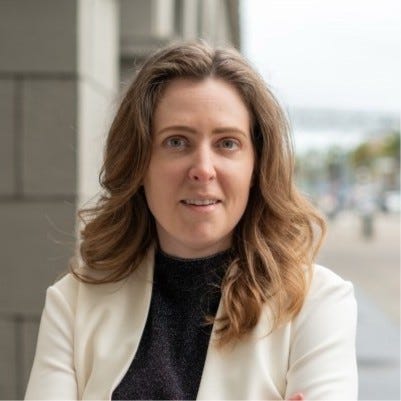Thought Leader Interview: Lauren Dermody
On breaking into VC, finding your founder community, and why venture capital is not a monolith
In this Thought Leader Interview, we feature Lauren Dermody, an investor with Venture University, a venture firm and fund that also operates a highly selective apprenticeship program designed to diversify the VC pipeline. Her path into venture has been anything but traditional; starting as an early hire in biotech startups, leading ecosystem building for sustainable materials, and ultimately writing her first angel check. Lauren’s insights challenge common myths about venture capital, and her vision blends cutting-edge tech with harmony for people and planet.
Lessons from Inside the VC Ecosystem
You’re currently with Venture University. What is it, and what do you do there?
Venture University is both a venture firm with its own fund and an apprenticeship program. Everyone below partner level is part of an apprenticeship cohort—people breaking into VC, getting educated, and building a network in the ecosystem.
It’s a unique on-ramp into venture capital, especially for those who don’t come from traditional backgrounds. The diversity in our cohorts is much higher than the VC industry average, which makes for richer perspectives and better investment conversations.
What’s one of the most surprising things you’ve learned so far?
I think the biggest thing I’d want founders to know is this: VC is not a monolith.
From the outside, people imagine “getting VC funding” as one uniform thing. But there are all kinds of funds, all kinds of investment stages (from pre-seed to Series F), and very different mandates.
When a VC says, “You’re too early”, that’s not necessarily a brush-off. It might mean, “Come back in 12 months at your next round.” That same company could be a perfect fit for a different fund that invests earlier.
It’s also about vertical focus. Yes, B2B SaaS is big, but there are funds focused on consumer, healthcare, health tech, climate, sustainability, deep tech, fintech, edtech, you name it. If you hear “no,” it often just means you’re not aligned with that fund’s strategy.
And here’s something to remember: bringing a VC onto your cap table is a long-term, high-commitment relationship. As one lawyer put it to me, “It’s easier to get a divorce than to get someone off your cap table.” So, as you fundraise, think about whether the fit goes both ways.
The Path into Venture
Tell us about your journey into VC.
I first caught the entrepreneurship bug as the first hire at a couple of biotech startups. We were in incubators and accelerators, and I loved the energy.
My most recent role before VC was with the Material Innovation Initiative, a nonprofit focused on sustainable materials in fashion. My job was to find promising startups, connect them to funding and clients, and grow the overall ecosystem.
That ecosystem-building work felt like a natural bridge into venture, people outside VC might not see the connection, but those inside it say, “Oh yeah, that makes sense.” Venture University opened the door for me, and now I’m learning the financial models behind investing while still keeping that founder-facing, relationship-driven approach.
What kinds of companies excite you?
I wrote my first angel check last month, and it was into a solar company. Personally, I’m passionate about the solarpunk vision: technology and humanity in harmony with the natural world. Think: plants and trees integrated into cities, solar panels on everything, waste-to-product innovations, tech that improves human well-being without depleting the planet.
Within Venture University, there’s strong interest in robotics, especially in industries facing labor shortages like construction and agriculture. I’m particularly excited about robotics in construction as a response to the housing crunch, and in Ag-Tech where automation can help address labor constraints. Healthcare robotics is harder to crack because of the human trust factor, but it’s an area with potential.
We’re also exploring longevity, databases, and even space-based data centers where solar power is constant and there’s no physical footprint on Earth.
Advice for Founders
Founders get tons of advice during incubators and accelerators, but what about after?
Find people and funders you actually enjoy working with. The classic “fail fast and pivot” advice still holds, but what sustains you is having the right relationships. Keep executing from every angle, don’t get discouraged, and most importantly, find your community.
For me, that’s meant joining groups like Founders Bay, attending events (there are tons listed on Luma), and creating informal channels, like a WhatsApp group where founders swap advice and help each other out.
And don’t view other founders as competitors. If you’re in the same space, you’re helping grow the same ecosystem. In my work with sustainable materials, every time a new startup launched, it raised the profile for everyone in the field. Collaboration expands the pie.
Are there common misconceptions you wish founders would drop?
The big one: “One VC said no, so I must not be fundable.”
No. VCs are humans, not omniscient gatekeepers. “Not a fit” often just means “not our mandate right now.” And because most funds specialize, a pass from one isn’t predictive of what others will say.
As she continues to bridge worlds between startups, sustainability, and capital, Lauren’s work underscores a simple but powerful truth: venture capital isn’t a monolith, and the future of innovation depends on voices willing to challenge the status quo.





